
Have you noticed how voice technology is taking over our lives? Imagine being able to find your favorite products, get recommendations, and even make purchases without lifting a finger. Sounds like a dream, right? Well, it's becoming a reality. Voice search is one of the smartest inventions for eCommerce businesses, which makes finding products easier and faster.
The market size for speech recognition is projected to increase to a substantial $8.53 billion in 2024. Consequently, the number of users is also going to increase. While this is a sign of market evolution, it is also a notice to e-commerce stores to subscribe to voice search on their stores. In this post, we will explore the benefits of voice search in e-commerce, and share some success stories to inspire you.
What is Voice Search in eCommerce?
Voice search in eCommerce is a technology that allows customers to search for products and information on an online store by speaking into their device rather than typing. It uses voice recognition software to convert spoken words into text, which is then processed to find relevant results. Let's just say it's like having a personal assistant at your fingertips or rather, at your voice tips.
The story of voice search technology started in 1952 with Bell Laboratories' creation of 'Audrey,' a system that could recognize spoken numbers from a single voice. From this small beginning, voice search technology has grown a lot. At first, it was a simple phone feature used for basic tasks. But its capabilities soon expanded.
By the mid-2010s, virtual assistants like Siri and Google Assistant had greatly improved the voice command experience. Today, over 142 million people are using voice technology through smart speakers like Amazon's Echo and Google Home. This technology has become common in our homes, making it easy to adjust the lights and set timers. And let's not forget, it makes shopping easier for everyone, especially people who find typing tiring or difficult.
How Does Voice Search Work for eCommerce?
Voice search is changing the way we shop online, bringing convenience and speed to our fingertips, or rather, our voices. This technology starts with voice recognition. When you speak into your device, it listens attentively captures your words, and converts them into text through sophisticated algorithms that understand the nuances of human speech.
But the magic doesn’t stop there. There's Natural Language Processing (NLP). You can call it the brain behind the operation. It digs deep into the text, decoding the meaning and intent behind your words. So, when you say, "Show me trendy sneakers," NLP knows exactly what you’re looking for, understanding "trendy" as the style and "sneakers" as the item.
How does this all come together on your favorite eCommerce platforms? Through simple integration. Developers use powerful APIs and software development kits (SDKs) to embed voice search features into websites and apps. This integration ensures that your voice commands are quickly translated into relevant product searches, connecting you with exactly what you want in seconds. For users, voice search transforms the online shopping experience into something almost magical. You can find what you need by simply speaking. It’s fast, intuitive, and makes shopping feel effortless.
Top 3 Tools That Enable Voice Search in Ecommerce
Here are the top three tools that enable voice search in eCommerce:
1. Google Assistant Actions
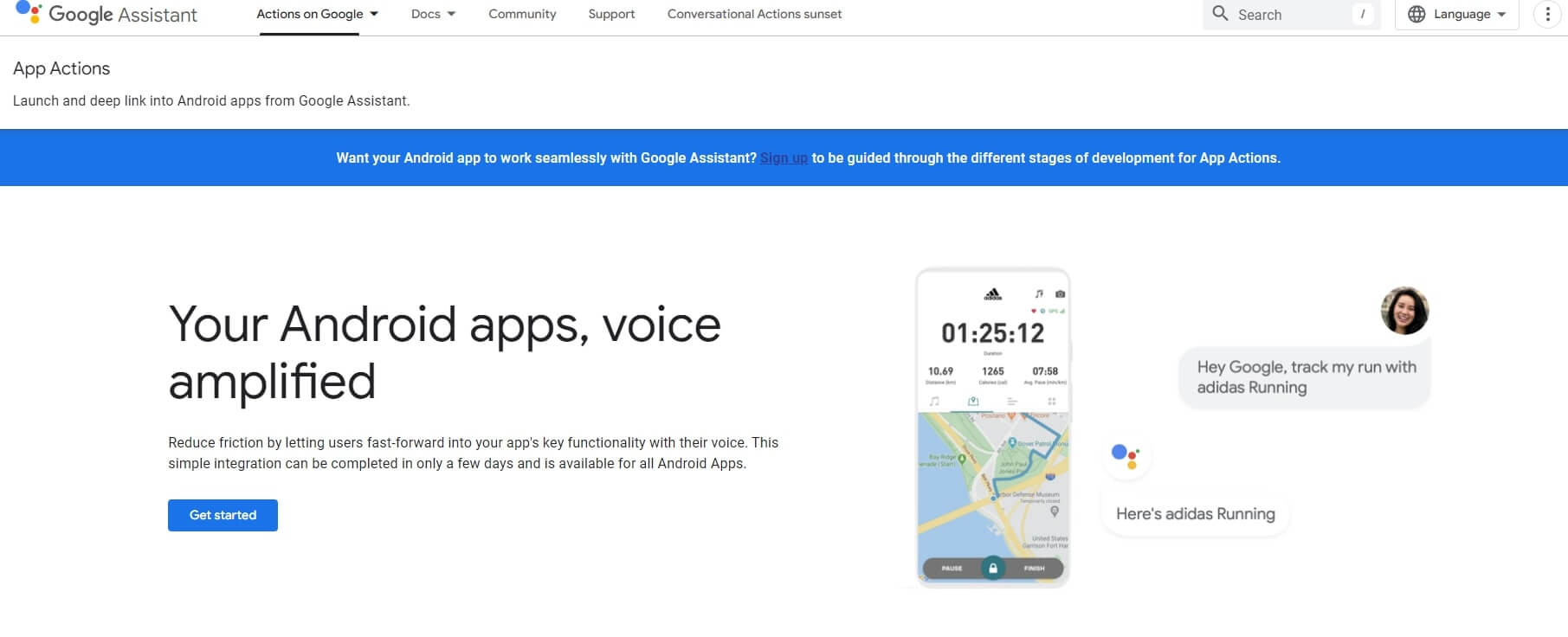
Google Assistant Actions allow eCommerce businesses to integrate voice search capabilities directly into their shopping platforms. This tool enables customers to use Google Assistant on various devices, including smartphones, smart speakers, and smart displays, to search for products, check order status, and manage shopping lists. Key features include:
- Voice-Activated Shopping: Customers can search and purchase products using voice commands.
- Personalized Recommendations: Leverages Google's AI to provide personalized product suggestions based on user preferences and past behaviors.
- Seamless Integration: Integrates with existing eCommerce platforms and supports various payment options.
2. Amazon Alexa Skills
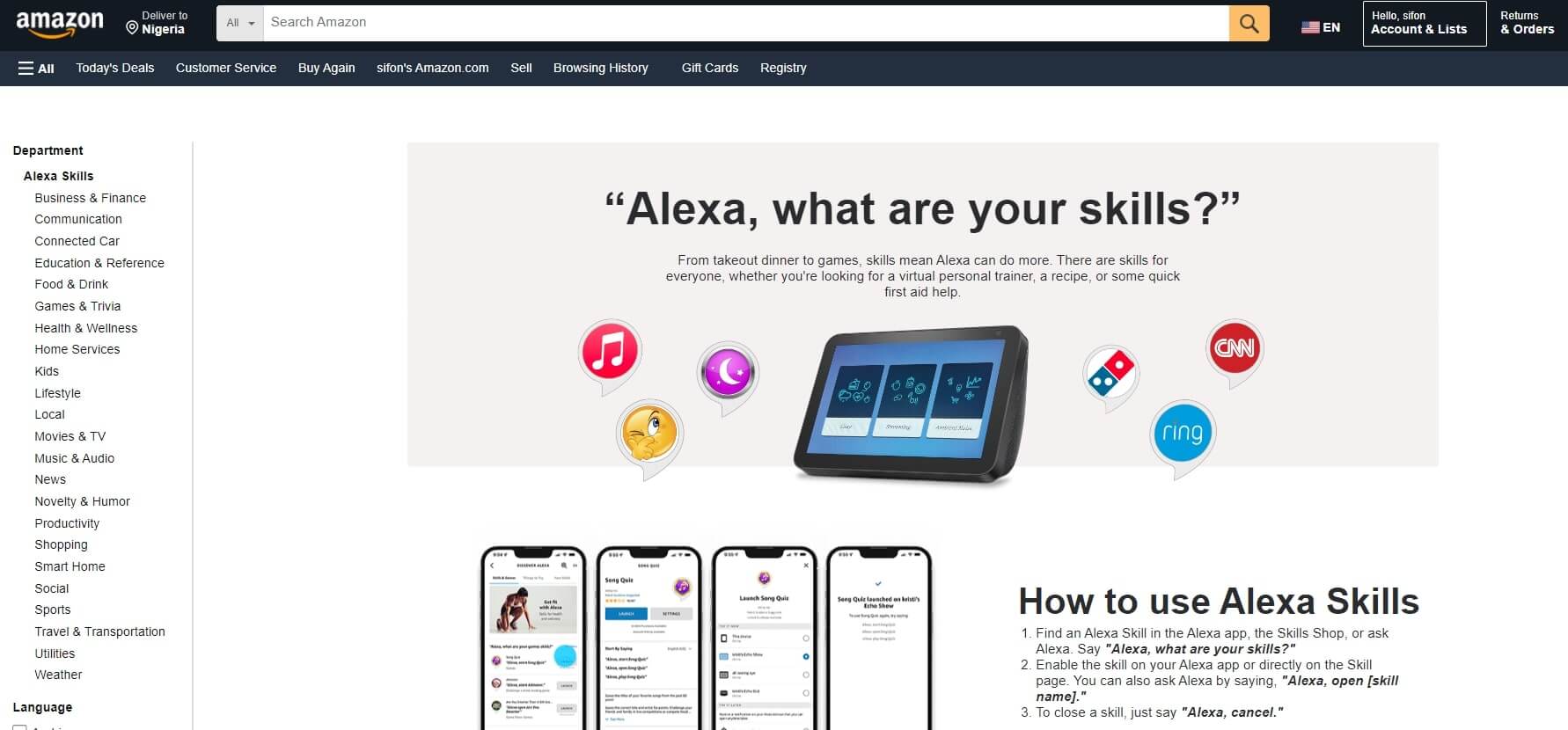
Amazon Alexa Skills provides eCommerce businesses with the ability to create custom voice experiences for their customers using Alexa-enabled devices. By developing Alexa Skills, businesses can offer voice search capabilities, enhance customer engagement, and streamline the shopping experience. Key features include:
- Voice Shopping: Enables customers to search for products, add items to their cart, and complete purchases using voice commands.
- Order Tracking: Allows users to check the status of their orders and get delivery updates through voice interactions.
- Product Information: Provides detailed product descriptions, reviews, and availability information via voice.
3. Microsoft Azure Cognitive Services
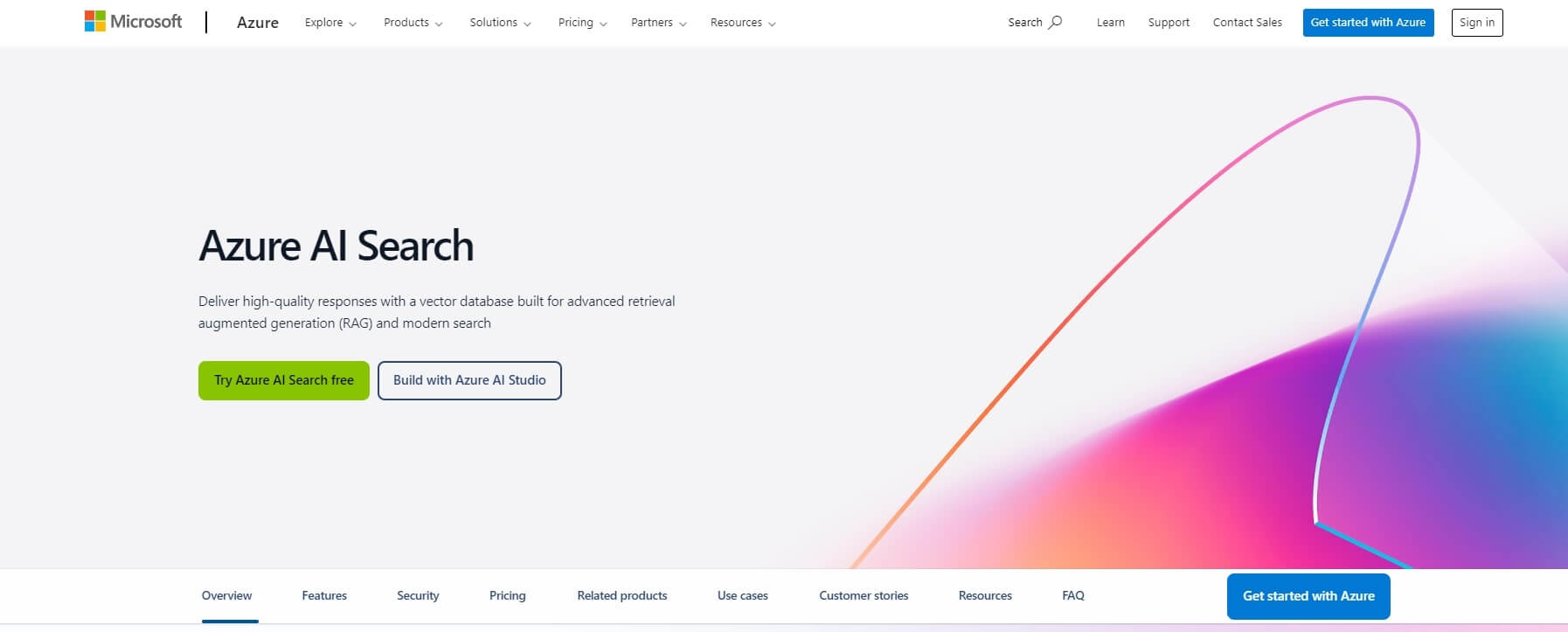
Microsoft Azure Cognitive Services offers a suite of AI tools, including Speech Service, that can be used to implement voice search functionality in eCommerce platforms. This service allows businesses to convert speech to text, understand natural language, and integrate voice search capabilities. Key features include:
- Speech Recognition: Converts spoken language into text to facilitate voice search queries.
- Natural Language Understanding (NLU): Understands the intent behind voice commands to provide accurate search results.
- Customization: Allows businesses to tailor the voice search experience to their specific needs and branding.
Summary Comparison Table
| Feature | Google Assistant Actions | Amazon Alexa Skills | Microsoft Azure Cognitive Services |
|---|---|---|---|
| Voice-Activated Shopping | Yes | Yes | Yes |
| Personalized Recommendations | Yes | No | Yes |
| Order Tracking | Yes | Yes | Yes |
| Product Information | Yes | Yes | Yes |
| Platform Integration | Seamless with Google ecosystem | Seamless with Amazon ecosystem | Customizable for various platforms |
| Natural Language Processing | Advanced | Advanced | Advanced |
| Payment Options | Supports multiple payment options | Supports multiple payment options | Depends on integration |
These tools can significantly enhance the user experience by making shopping more accessible and convenient through voice commands, ultimately driving higher engagement and sales for eCommerce businesses.
Statistics on Voice Search in eCommerce
A lot of research has been carried out to check the number of people adopting voice searches during online shopping. They include:
- Adoption Rates Almost everyone uses voice search these days. In fact, 71% of internet users prefer using voice search over typing to conduct their queries. Voice search is appealing to a broad demographic, but certain groups are particularly engaged. 77% of adults aged 18 to 34 use voice search on their smartphones, against 63% of adults aged 35 to 54. In China, 39.3% of internet users use voice assistants weekly, which is higher than in any other surveyed country. To understand better, the graph below will help you out:
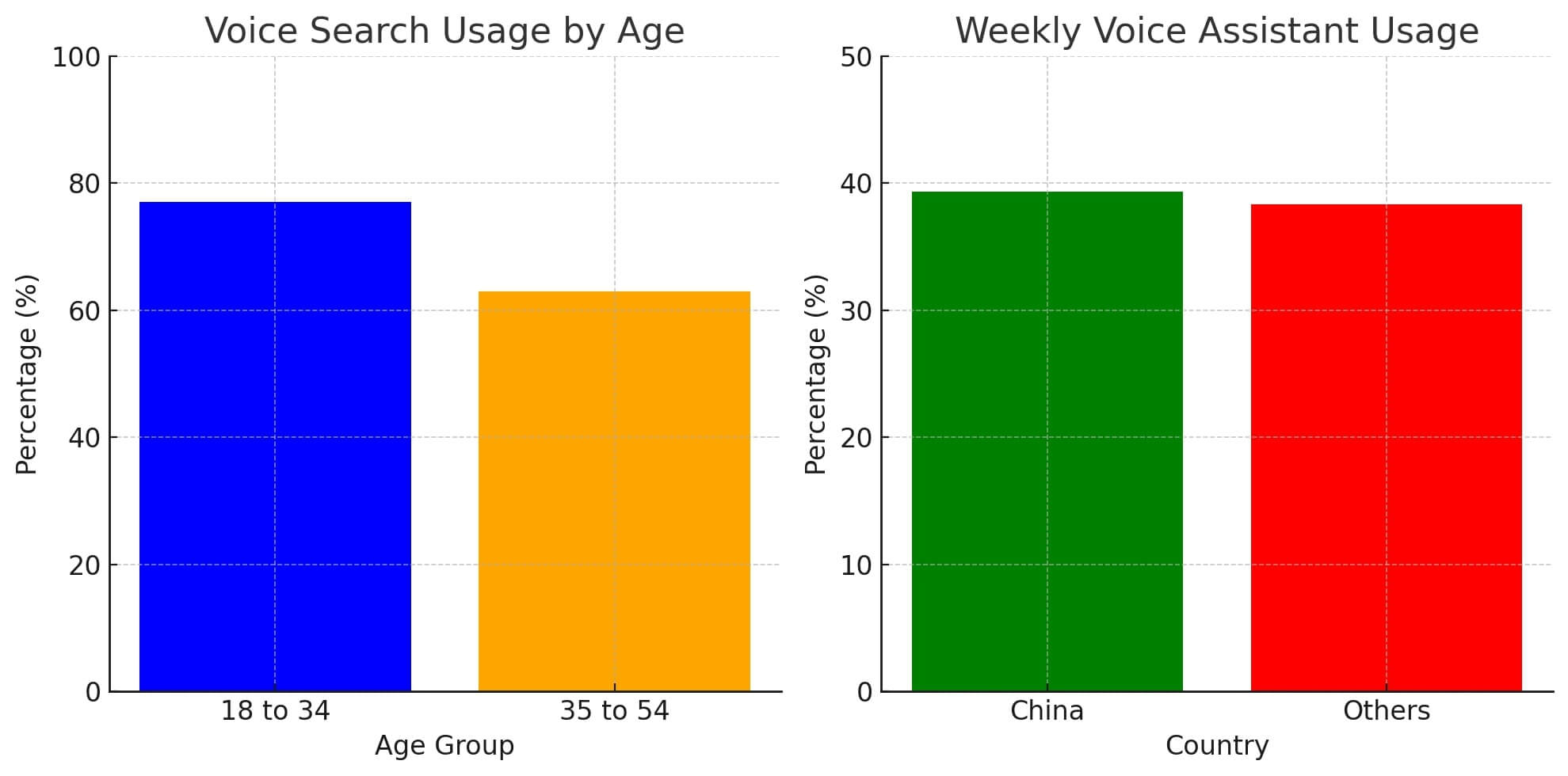
- Impact on Conversion Rates Implementing voice search can lead to a significant boost in conversion rates. Some experts believe it could increase your total eCommerce revenue by up to 30%, as users find it faster and more convenient to search for products and complete purchases using voice commands. It has even been projected to become a $45 billion market by 2028. So, you can capitalize on this growing revenue opportunity by taking a closer look at consumers' preferences and behaviors in voice interactions.

- Market Data
The smart speaker industry is experiencing substantial growth, with a market value of $6.4 billion in 2023 and projections of reaching $110 billion within the next decade. Voice-assisted shopping is also rapidly expanding from $4.6 billion in 2021 to $19.4 billion in 2023, with continued growth anticipated. Also, the global voice commerce market is expected to reach $40 billion by the end of 2024, reflecting significant growth and adoption, based on Global market insights.
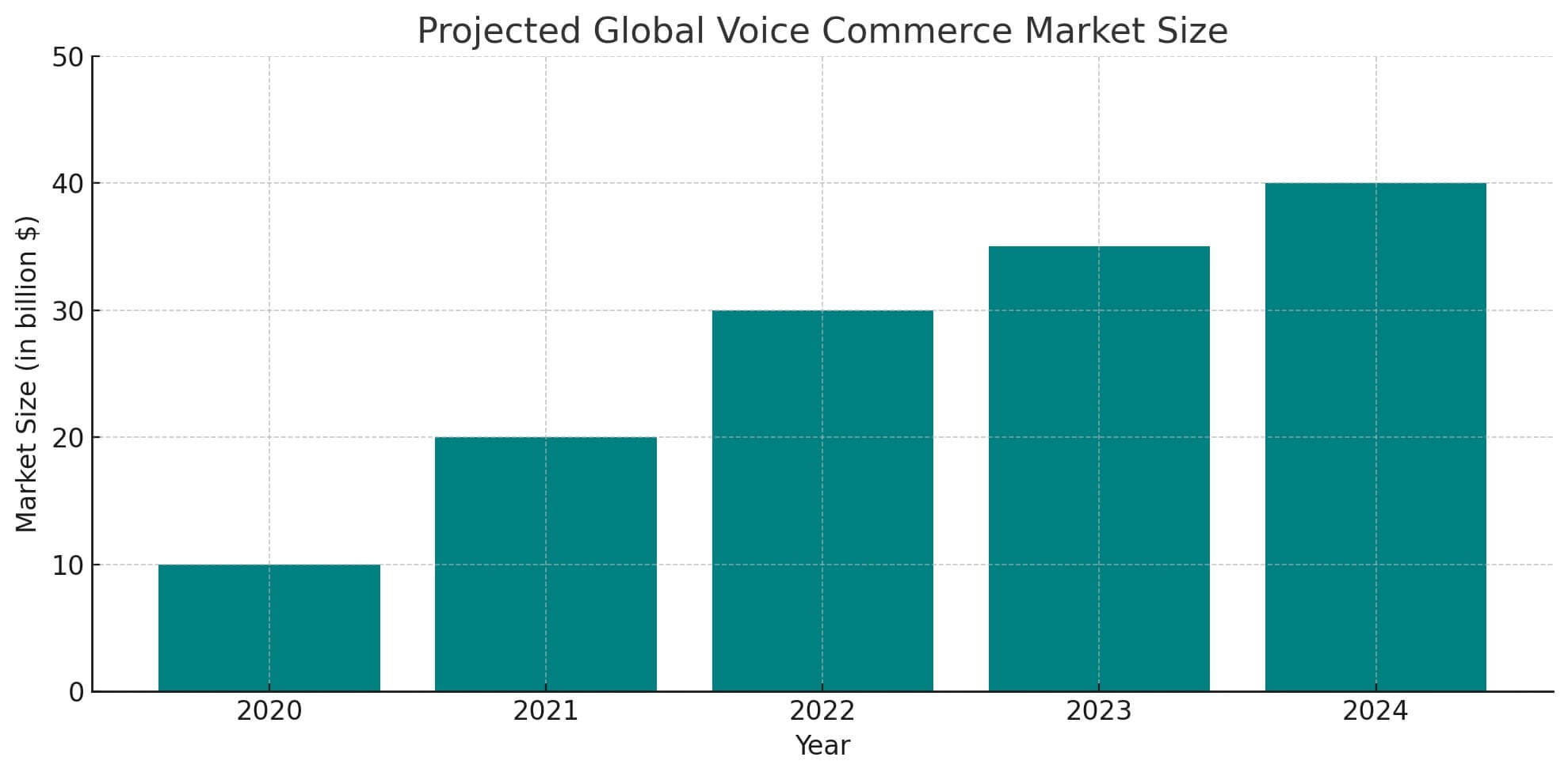
How Exactly Does Voice Search in eCommerce Provide an Edge to Your Business?
There are several benefits that using a voice search can bring to your business. Some of them are:
Competitive Advantage
Adding voice search to your business can greatly enhance customer experience. Not only that, because voice search is fast, you'll have lots of orders from your store. Do you know why? People usually type 38 to 40 words per minute, but they can speak 100 to 150 words per minute. This means voice search lets users find information much quicker.
SEO Benefits
Unlike traditional SEO, which focuses on keywords typed into search engines, voice SEO targets spoken language. This involves optimizing content to match how people talk rather than how they type, ensuring that voice search results are more relevant. It uses longer, and more conversational phrases. So, by optimizing for these long-tail keywords, businesses can capture specific queries that customers might use, giving them an edge in search results.
Accessibility
Voice search can be very useful for elderly people, those who aren't familiar with technology, or individuals with disabilities who find it hard to use a keyboard. Instead of typing, they can simply ask Siri or Google to check the weather, make a phone call, or order groceries. This helps them be more independent.
Examples of Top 5 eCommerce Websites Using Voice Search
Want to see voice search in action? Let's explore how these top 5 eCommerce websites are using voice search to revolutionize their customer experience.
Amazon
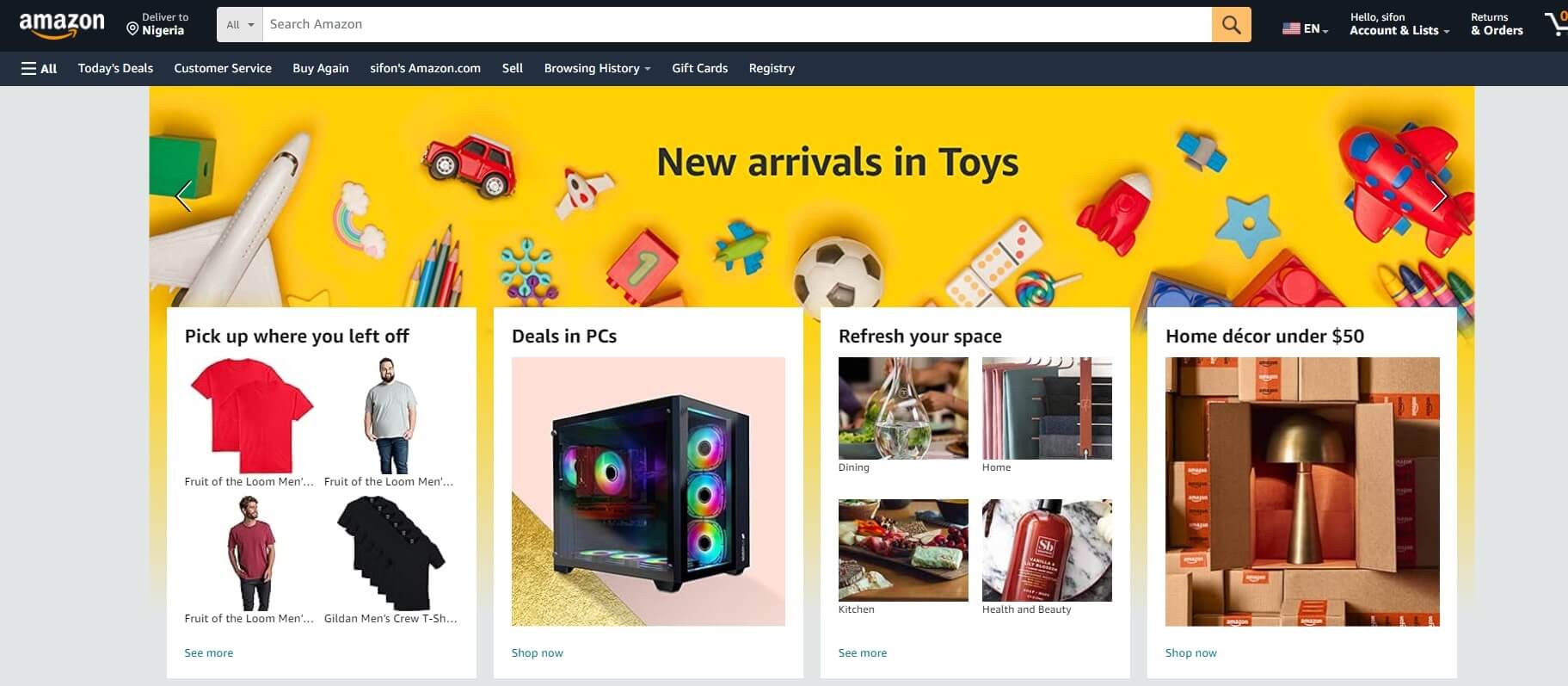
Amazon has become a leader in using voice search for online shopping with its smart speaker, the Amazon Echo, and its virtual assistant, Alexa. By using voice technology, the company has made shopping feel like a simple conversation. Users can add items to their cart, reorder past purchases, and track orders all through voice commands. This smooth integration not only makes shopping more convenient but also increases customer engagement and satisfaction.
Walmart

Walmart has also recognized the value of voice search shopping by teaming up with Google's voice search app, which improves the shopping experience for its customers. Customers can use voice commands to add items to their shopping list or cart, which streamlines the shopping process and provides a hands-free experience. This feature is particularly beneficial for busy customers who multitask while shopping.
Target
Target has incorporated voice search into its mobile app, allowing customers to find products, check what’s in stock at their local stores, and place orders using voice commands. This integration creates a smoother and more convenient shopping experience for users.
eBay
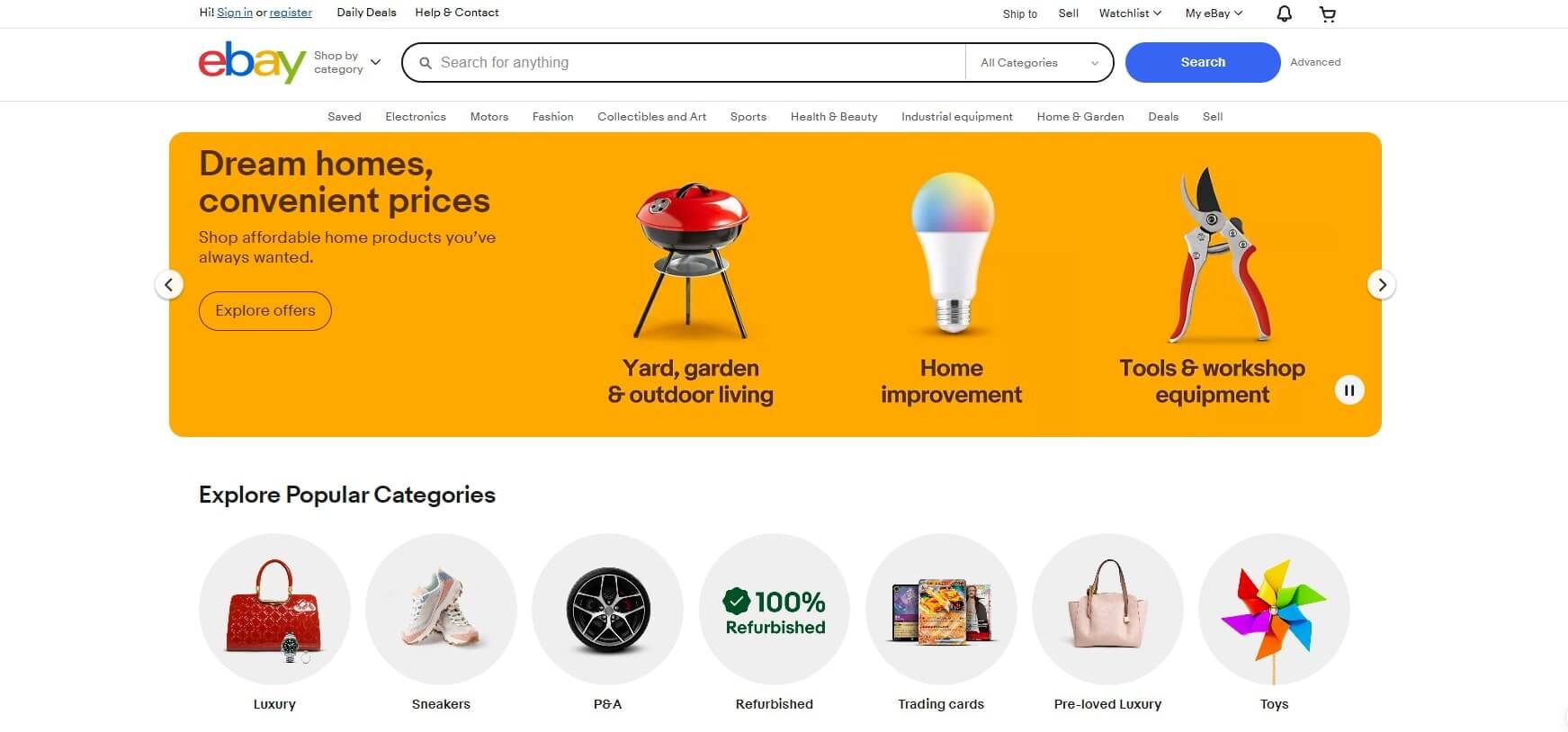
eBay’s voice search functionality allows users to find products quickly by answering their search queries. This feature not only speeds up the search process but also helps users find more accurate results based on natural language processing, making the shopping experience more intuitive.
Best Buy

Best Buy has added voice search to help customers locate products, check if items are available in stores, and place orders. This feature makes shopping quicker, especially for those who like to interact without using their hands. These examples above show how voice search enhances the shopping experience by making it more convenient and hands-free. They also highlight how businesses can improve customer engagement and streamline their operations with this technology.
Best Practices to Optimize Voice Search on Your eCommerce Site
If you just implemented voice search on your website, and you're looking for ways to optimize it properly, you can follow the steps below:
1. Technical SEO
- Schema Markup: To make your online store friendly for voice search, you need to communicate effectively with search engines. Using structured data markup like Schema helps search engines understand your site's content better. This makes it easier for them to identify the products you offer and increases the chances of your products appearing with detailed information in voice search results. For instance, when someone asks, "Where can I buy a red dress?" your site could be the answer they hear.
- Mobile Optimization: Did you know most voice searches happen on mobile devices? It’s true! That means your eCommerce site needs to look and work great on smartphones and tablets. Ensure your site has a responsive design, adapting smoothly to different screen sizes. Test it on various mobile devices to confirm it loads quickly and operates without a hitch. After all, nobody likes waiting.
2. Content Strategy
- Conversational Content: When people use voice search, they speak naturally rather than typing in keywords. This means moving away from technical language and adopting a more conversational tone in your content for online stores. Think about the longer phrases customers might use when asking questions or describing what they need.
- FAQ Pages: Voice searches tend to be more conversational and are often framed as questions instead of just a series of keywords. When optimizing for voice searches, it’s important to consider how people will ask questions, and create FAQs to answer these common questions.
3. Performance Optimization
- Page Speed: Page speed is very important for both traditional and voice searches. People want quick answers, and if your website is slow, they might go to a different site. Make sure your landing pages are optimized for both regular searches and voice searches. If you don’t have an IT team to handle this, you can use Google’s tools, or hire an agency to take care of it.
- Site Navigation: Simplifying your site’s navigation is key to a great user experience and better voice search results. Create a clear, logical site structure with straightforward menu labels. Ensure your most important pages are just a click away from the homepage.
4. Continuous Improvement
Installing voice search demands continuous improvement so that it can adapt as your store progresses. Here's how you can do it correctly.
- Monitoring and Analytics: To stay on top of voice search, you need to monitor how well your site is doing. Use analytics tools like Google Analytics and Google Search Console to track your performance. These tools provide insights into how users find your site through voice search, helping you pinpoint areas for improvement.
- User Feedback: Your customers are your best resource for improving voice search functionality. Ask them about their experience with voice search on your site through surveys, feedback forms, or direct communication. Use their input to make necessary changes.
Conclusion
How often do you make typing errors when searching on your smartphone? These mistakes are common when you're in a hurry or stressed. Adding voice search to your e-commerce site makes it easier and faster for customers to find what they need, reducing the chances of errors. While there are challenges and privacy issues to solve, the attraction of hands-free shopping is strong. Also, look out for your page speed, create conversational content, optimize your site for mobile users, and use Schema markup. Who knows? With the rise of smart home devices, voice search will become a regular part of our daily lives. If you need help, you can reach out to us, and we’ll show you your way around, and help you stay ahead of your competitors.
FAQS
Q. What's an example of voice search in eCommerce?
An example of voice search in eCommerce is using Amazon's Alexa to make purchases. For instance, a customer can say, "Alexa, order laundry detergent," and Alexa will search through Amazon's inventory, find the preferred brand based on the customer's past purchases or preferences, and place the order.
Q. What is voice-based eCommerce?
Voice-based eCommerce refers to the use of voice recognition technology to shop online or make other transactions. It allows consumers to interact with eCommerce platforms through voice commands, using smart speakers or voice assistants like Alexa, Google Assistant, or Siri.
Q. What is voice search in marketing?
Voice search in marketing is optimizing your online content to match how people speak, so your brand shows up when they search using voice commands.
Q. Does Amazon have voice search?
Yes! Amazon's Alexa is a pioneer in voice search. You can search, buy, and even track packages using just your voice.
